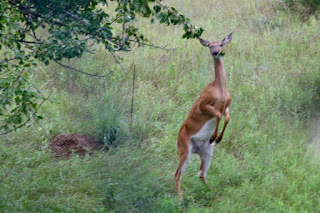 |
| why doesn't Minnesota have one of these reports? |
The Minnesota Pollution Control Agency's web site also has a page on Mining. Lots of interesting looking links there, but noting we noted that appears to lead to any kind of mining performance report.
Minnesota state government also has a Minerals Coordinating Committee [MCC] web page. The MCC was created "To provide for the diversification of the State's mineral economy through long term support of mineral exploration, development, production, and commercialization". Their web site has a page to facilitate "Doing Business in Minnesota," but no report we could find on the impacts of mining on the state's resources, environment or people.
There's nothing on the Minnesota Department of Commerce's web site that would lead one to look for the performance of the mining sector in Minnesota. The Minnesota Mining web site makes some general statements about compliance with Minnesota's strict environmental standards, but no report on how any mines have actually met standards and what those standards are. WHY HASN'T MINNESOTA MINING PROPOSED PROCESSES, STANDARDS AND REPORTING COMPARABLE TO CANADA'S TOWARD SUSTAINABLE MINING? Is Minnesota becoming "low-hanging fruit" in the international mining sector, or has it already attained that status?
There are at least two noteworthy aspects of Canada's TSM approach that we admire. First, it involves representatives from a broad spectrum of interests (Community of Interests) in an oversight and confirmation role. Second, they've been at this for a number of years and seem to be demonstrating real world performance improvements. This is not simply a "we're meeting permit requirements" effort. The number of sectors involved should help minimize "greenwashing" opportunities. (For how many years did Minnesota's water quality "sulfate standard" go unenforced? How many Minnesota mines continued to operate for years under expired discharge permits because the mine operator had applied for a renewed or new permit on a timely basis and the Pollution Control Agency had higher, other priorities than processing those permits?)
At Tower Peak
by Gary Snyder
Every tan rolling meadow will turn into housing
Freeways are clogged all day
Academies packed with scholars writing papers
City people lean and dark
This land most real
As its western-tending golden slopes
And bird-entangled central valley swamps
Sea-lion, urchin coasts
Southerly salmon-probes
Into the aromatic almost-Mexican hills
Along a range of granite peaks
The names forgotten,
An eastward running river that ends out in desert
The chipping ground-squirrels in the tumbled blocks
The gloss of glacier ghost on slab
Where we wake refreshed from ten hours sleep
After a long day's walking
Packing burdens to the snow
Wake to the same old world of no names,
No things, new as ever, rock and water,
Cool dawn birdcalls, high jet contrails.
A day or two or million, breathing
A few steps back from what goes down
In the current realm.
A kind of ice age, spreading, filling valleys
Shaving soils, paving fields, you can walk in it
Live in it, drive through it then
It melts away
For whatever sprouts
After the age of
Frozen hearts. Flesh-carved rock
And gusts on the summit,
Smoke from forest fires is white,
The haze above the distant valley like a dusk.
It's just one world, this spine of rock and streams
And snow, and the wash of gravels, silts
Sands, bunchgrasses, saltbrush, bee-fields,
Twenty million human people, downstream, here below.
********************************************
Thanks for visiting. Come again when you can.
Please be kind to each other while you can.


















